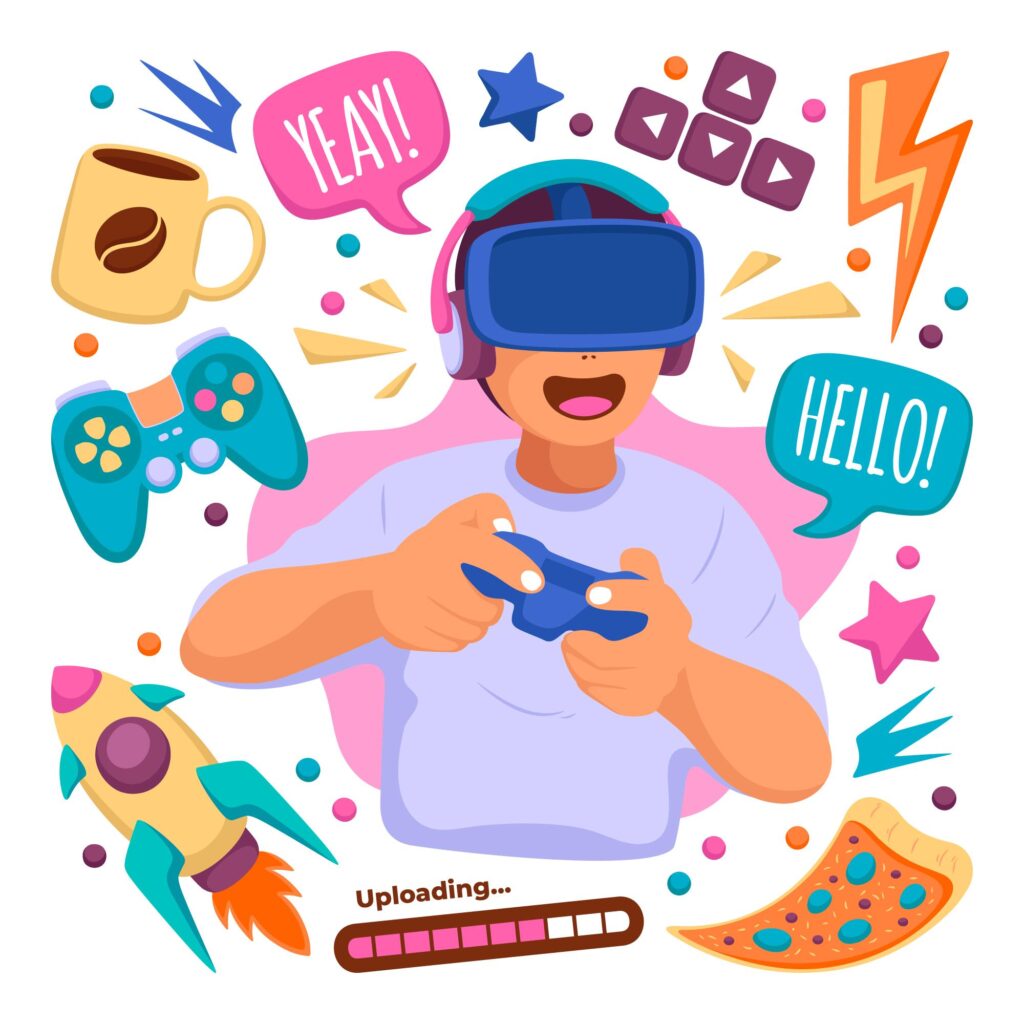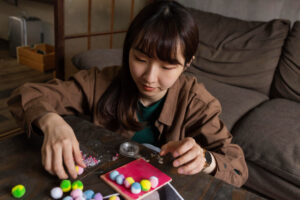
Games and Activities That Boost Social Communication in ADHD
Children with Attention‑Deficit/Hyperactivity Disorder (ADHD) often face challenges not only in attention, impulsivity or hyperactivity but also in social communication — the ability to interact, listen, take turns, read body language, and engage meaningfully with peers. What many parents and educators sometimes miss is that social communication can be developed, practiced, and strengthened through games and structured activities.
At Haghighati Occupational Therapy Academy, we believe that when children with ADHD are given the right play‑based opportunities, they can build confidence, improve peer relationships, and translate these gains into school, home, and social settings. In this article, we’ll explore:
- Why social communication tends to be difficult for kids with ADHD
- Key elements of games and activities that support social communication
- A curated list of specific games and activities with practical details
- Tips for adapting these games for children with ADHD
- How therapists, parents, and educators can integrate these strategies
- The role of occupational therapy in scaffolding social communication through play
Let’s begin by understanding why children with ADHD may struggle with social communication.
Why Children with ADHD Often Struggle with Social Communication
Before diving into activities, it’s important to recognise the root‑causes so that activities are targeted appropriately.
- Impulse control and turn‑taking difficulties
Children with ADHD often find it hard to wait their turn, interrupt peers, or dominate conversations. This affects cooperative play and social communication. Games that enforce structured turn‑taking address this directly.
- Challenges in listening and staying on topic
Sustaining attention during conversations, following multi‑step instructions, or staying on topic can be difficult. This can lead to off‑topic remarks, missing social cues, or disengagement. Activities that require listening, reflection, and responding help build this skill.
- Executive function and social regulation
Social communication requires higher‑order skills: monitoring one’s behaviour, shifting topics, reading non‑verbal cues, adapting to peer responses. These are executive‑function tasks, and children with ADHD often have weakness here. Games that require planning, reflection, strategy, or self‑monitoring strengthen these underlying systems.
- Emotional and sensory regulation interfering with social engagement
If a child is dysregulated (emotionally or sensory‑wise), it becomes harder to engage socially: to read another person’s face, to wait, to shift focus. Movement‑based or sensory‑friendly activities help set the stage for better social communication.
- Reduced opportunities and peer skill gaps
Because of earlier social mis‑steps, children with ADHD may withdraw or be excluded from peer play, which reduces practice opportunities. Purposeful games provide structured chances for repeated social practise in a safe setting.
Understanding these reasons helps us select and tailor games and activities that deliberately address social communication skills — especially for children with ADHD.
Key Features of Effective Games & Activities for Social Communication in ADHD
When selecting games or designing activities, look for the following characteristics. These features maximise relevance and success for children with ADHD.
- Structure with flexibility
The game should have a clear structure (turn‑taking, roles, rules) but also allow flexibility so that the child can make choices, take initiative and practise interaction rather than just following rigid steps.
- Turn‑taking, sharing and collaboration built in
Social communication demands interacting with others — sharing ideas, waiting, responding. Games that embed collaboration or team play naturally require these skills.
- Active listening and response
Choose activities that require children to listen, process what someone else says or does, and then respond appropriately. This might include asking a follow‑up, shifting topic, clarifying meaning.
- Low cognitive load and appropriate difficulty
Children with ADHD may get frustrated if a game is too complex or overwhelming, so the activity should match their developmental level. Ideally it includes scaffolding and gradually reduces support as competence increases.
- Physical or sensory component (optional but beneficial)
Including movement, sensory cues or tactile elements helps children with ADHD engage, regulate their energy, and stay involved in the social interaction.
- Opportunities for reflection and feedback
After playing, children should have a chance to reflect on how the interaction went: “What did I notice? Did my friend look bored? Did I wait my turn?” This builds metacognitive and social‑awareness skills.
- Generalisability across settings
The skills practiced in the game should translate to real life: to school, home, playground. The game therefore should mirror typical social‑communication situations or allow variation.With these features in mind, let’s move into specific games and activities you can use or adapt at your Academy or at home.
Specific Games and Activities That Boost Social Communication in ADHD
Here are a list of recommended games and activities, along with practical guidance on how to implement them for children with ADHD.
- “Hedbanz” or Question & Answer Head Band Game
A simple and effective card game where a child wears a headband with a picture they cannot see and asks yes/no questions to deduce their card.
- Builds listening, turn‑taking, question‑asking, peer interaction.
- Kids must wait their turn, listen carefully, respond appropriately.
- According to ADHD‑friendly game lists, this game is cited for critical thinking and social skill practice.
How to adapt for ADHD: Use a visual timer (e.g., 30 seconds per question) to keep pace. Provide cue cards: “Ask a yes/no question,” “Wait your turn,” “Let the other speak first.”
- Conversation Jenga / Story‑Chain Block Game
Use Jenga blocks labelled with social‑communication prompts (e.g., “Ask a question,” “Describe how you feel,” “Tell something about your day”).
- Players pull a block, follow the instruction, then the next person does the same.
- Encourages turn‑taking, listening, appropriate responses, and peer engagement.
Why it works: This aligns with social‑skills activities outlined in children’s mental‑health resources.
ADHD adaptation: Limit block prompts to a small set initially (4‑5) and increase as the child becomes comfortable. Use physical movement (stand and stretch) between turns if the child is restless.
- Role‑Playing / Improv Scenes
Set up simple role‑play scenarios: “You are entering a group of children playing,” or “You want to ask to join a game,” or “Your friend looks sad, what do you say?”
- Encourages reading body language, turn‑taking, asking questions, perspective‑taking.
- According to ADHD‑friendly activity lists, role‑playing and storytelling games help communication and social awareness.
Implementation tip: Use visual cue cards with roles. Use short scenarios (2‑3 minutes). Debrief afterwards: “What did you notice? Did you wait? Did you listen?”
- Cooperative Board Games with Social Rules
Games such as “UNO,” “Qwirkle,” or fast‑paced card games that require turn‑taking, waiting, responding to others. These are recommended as beneficial for children with ADHD.
Why they support social communication: They naturally require interaction, discussion, following rules, socially acceptable responses.
ADHD adaptation: Choose games with shorter duration, visual reminders on turn order, reduce options per turn if the child gets overwhelmed. Reward successful social responses (e.g., “You asked nicely for the card” or “You waited your turn”).
- Musical Movement + Communication Freeze Game
Combine movement (music) with communication turns: When the music stops, freeze and ask a peer a question or respond to a peer’s question.
- Builds listening (to music), impulse control (freeze when music stops), turn‑taking and peer interaction (question/answer).
Why it’s helpful: Movement helps regulate attention and arousal in children with ADHD which then supports their ability to engage socially.
Adaptation: Use shorter music segments (30‑45 seconds). Use visual cue cards for questions. Use auditory cue (freeze sound) for more clear signalling.
- Outdoor Scavenger Hunt with Peer Communication
Set up a hunt where children must work in pairs/trios, communicate to find items, ask each other clues, take turns giving hints and capturing pictures.
- Promotes peer‑communication, listening to each other, taking turns, sharing roles.
ADHD benefit: Movement + social communication + real‑world context make it engaging.
Implementation: Provide visual checklists, time blocks, clear roles (finder/ speaker/ photographer). Encourage reflection after: “How did you decide together?” “Did you ask questions?”
- Strengths Collage & Sharing (SEL Activity)
Children create a collage of their strengths and then share with a peer/group, taking turns, asking questions and listening to each other’s strengths.
- From SEL (social‑emotional learning) list of activities for students with ADHD.
Why it works: Builds speaking/listening skills, peer interaction, turn‑taking and social sharing.
Adaptation: Use large images, limit the number of strengths (3‑4) to avoid overwhelm. Provide question prompts: “Tell me one thing you see in my collage,” “Why is that strength important?”
- “Simon Says” with Social Cue Twist
Classic “Simon Says” game, but incorporate social‑communication cues: e.g., “Simon says make a face that shows you’re listening,” or “Simon says ask your partner what they think.”
- Engages listening, waiting, understanding cues, responding to peer interaction.
Why it fits: Simple, movement‑based, clear structure which suits children with ADHD and reduces cognitive overload.
Adaptation: Keep rounds short (5‑7 commands), use visuals to support instructions, pair children so they alternate giving commands.
- Cooperative Story‑Building Game
Children take turns adding a sentence to a story. Use a spinner or card to indicate whose turn it is and what kind of sentence (e.g., question, description, emotion).
- Builds listening (to what others said), turn‑taking, responding, staying on topic.
ADHD‑specific benefit: Keeps the structure predictable but dynamic; the movement of turn reduces endless thinking time.
Implementation: Limit story to 10 turns, provide visual prompts, use a timer for each turn (e.g., 30 seconds) to keep pace.
- Video Game & Digital Cooperative Play
While screen time must be managed, cooperative interactive digital games (multiplayer puzzle or strategy games) can foster peer interaction, communication and planning together. According to sources, games for ADHD can support social skills and peer engagement when used well.
How to use: Choose age‑appropriate cooperative game, limit session to 20–30 minutes, follow with discussion: “How did you talk to your teammate? Did you wait? Did you ask for help?”
Adapting These Activities for Children with ADHD
Selecting the game is half the battle; tailoring how you deliver it is equally vital to ensure success for children with ADHD. Here are adaptation‑tips:
Set clear rules & visual supports
Before starting, clarify game rules verbally and visually (chart, icons). Use visuals like “Your turn,” “Wait,” “Speak now,” “Listen now.” These supports reduce cognitive load and help maintain social engagement.
Use shorter, high‑energy sessions
Children with ADHD may struggle with long sessions. Aim for 10–20 minutes of active play followed by brief break or movement transition. Movement helps reset attention.
Provide scaffolding and fade over time
Initially, use prompts or cues (e.g., “What question will you ask next?” or “Did you hear what your partner said?”). As the child practises and improves, fade the prompts to build independence.
Incorporate movement and sensory breaks
Frequently build movement transitions into the game: jumping, stretching, walking around. These breaks help regulate arousal and support readiness for social communication.
Reflect after play
End each session with short debriefing: “What went well? Did you wait your turn? Did you ask a question? Did you notice if your friend looked bored?” This reflection builds metacognitive awareness of social interaction.
Encourage peer pairing and adult support
Pair children thoughtfully (similar social skill level or supportive peer). Have an adult facilitator observe and prompt subtly when needed to ensure positive social interaction.
Generalise to real‑world settings
Use the language and prompts from the games in everyday situations: “Remember how we asked a question in story‑building game — you can ask your friend that now.” Bridge practice to school, home, playground.
Role of Occupational Therapy at Haghighati Academy in Supporting Social Communication Through Play
At Haghighati Occupational Therapy Academy, our approach leverages play‑based, structured activities to strengthen social communication in children with ADHD.
Comprehensive assessment of social‑communication skills
We begin by assessing each child’s strengths and needs in turn‑taking, listening, social cue reading, response initiation, peer interaction, and executive‑function aspects of communication.
Goal‑setting and individualized intervention plans
We set functional, measurable goals like: “Child will ask a peer at least one question during the coop board game 80% of turns” or “Child will wait for their turn before speaking in a group of three within 5 minutes.” Then we choose games and activities (from above list and beyond) tailored to meet these goals.
Embedding games into therapy sessions
Rather than isolated drills, we embed social‑communication games into weekly OT sessions: building from more structured to more open‑ended, increasing peer numbers, reducing supports gradually, integrating movement/sensory regulation. We monitor progress, collect data, and adjust accordingly.
Parent, teacher and peer coach involvement
We train parents and educators to replicate and support games at home/school, to recognise and reinforce social‑communication behaviours, to use strategies such as visual supports, reflection after peer play, and scaffolding social interactions during daily routines.
Tracking generalisation and maintenance
We include home play‑kits and school‑tips, monitor if the child is transferring skills beyond therapy space, and plan “booster” sessions to maintain skills over time.
By utilising game‑based interventions, movement/sensory regulation strategies, explicit social‑communication coaching, and generalisation supports, we help children with ADHD become more confident, fluent and successful communicators in peer settings.
Conclusion
Social communication is a vital skill set that impacts friendships, school success, emotional wellbeing, and lifelong interactions. For children with ADHD, this area often presents challenges — but importantly, it is teachable and practicable with the right conditions.
By leveraging games and structured activities that emphasise turn‑taking, listening, response, collaboration, and movement, we provide fun, engaging, and effective pathways for improvement. At Haghighati Occupational Therapy Academy, we integrate these strategies into our therapeutic model: from assessment, to goal‑setting, to play‑based intervention, to generalisation.
Whether you’re a therapist, educator or parent, selecting and adapting games that fit your child’s developmental level, attention span and sensory profile is key. Start with short, structured, scaffolded play sessions, incorporate sensory or movement breaks, use visual supports, reflect on interactions, and then gradually fade the supports to build independence.
Every game becomes an opportunity: an opportunity to ask a question, to listen, to wait a turn, to respond to a peer, to practise kindness and interaction in a safe, structured way. Over time, these small wins translate into more confident social communication, better peer relationships and more positive experiences in school and life.
If you’d like help selecting game‑kits, structuring sessions, or embedding these activities into your home or school routine, Haghighati Occupational Therapy Academy is here to partner with you. Let’s help children with ADHD build stronger social connections—one game at a time.

